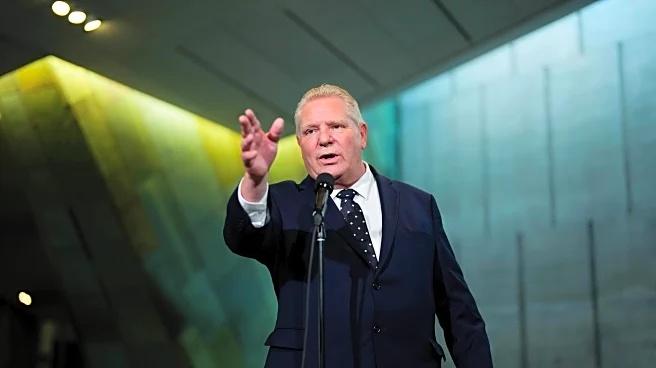What's Happening?
President Trump has signed an order to extend tariff relief for automakers and formalize new duties on imported trucks. The order allows automakers to continue reducing tariffs on imported vehicle parts, extending a 3.75% offset program until 2030. Additionally,
a new 25% tariff on imported medium and heavy-duty trucks and parts will be implemented starting November 1. This decision follows a Section 232 probe into truck imports to assess their impact on national security. The move is part of Trump's broader strategy to boost domestic manufacturing and address trade imbalances. The tariffs are expected to affect sectors such as steel, aluminum, and autos, with specific provisions under the USMCA for trucks sourced from Mexico and Canada.
Why It's Important?
The extension of tariff relief and the introduction of new truck duties have significant implications for the U.S. automotive industry and international trade relations. By maintaining the offset program, U.S.-based vehicle production is incentivized, potentially benefiting domestic manufacturers. However, the new tariffs on trucks could increase costs for importers and impact trade dynamics with Mexico and Canada, key suppliers of heavy trucks to the U.S. The decision reflects ongoing trade tensions and efforts to protect national security through economic measures. Stakeholders in the automotive sector and trade partners may face challenges in adapting to these changes, influencing market strategies and international negotiations.
What's Next?
The implementation of the new tariffs on trucks will begin on November 1, with the Commerce Department expected to establish processes for targeting non-U.S. content in truck parts. Trade partners, particularly Mexico and Canada, may seek further negotiations to mitigate the impact of these tariffs. The U.S.-Mexico-Canada trade agreement provides some favorable treatment, but the overall trade pressure could lead to shifts in export strategies and economic adjustments. The automotive industry will need to navigate these changes, potentially influencing production decisions and supply chain management.
Beyond the Headlines
The tariff changes highlight the complex interplay between trade policy and national security concerns. The use of Section 232 investigations underscores the administration's approach to leveraging economic tools for strategic purposes. The long-term effects on trade relationships and domestic manufacturing competitiveness remain uncertain, with potential implications for global supply chains and economic diplomacy. The focus on rewarding U.S.-based production may also influence future policy decisions and industry lobbying efforts.














